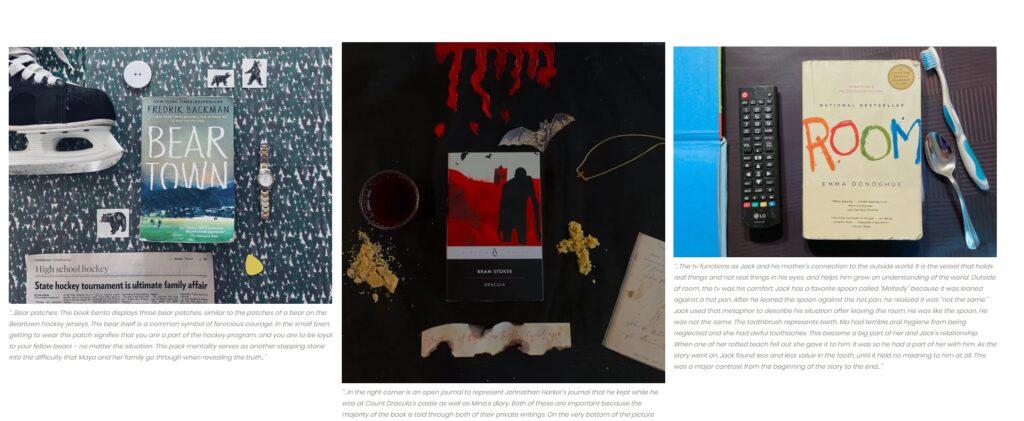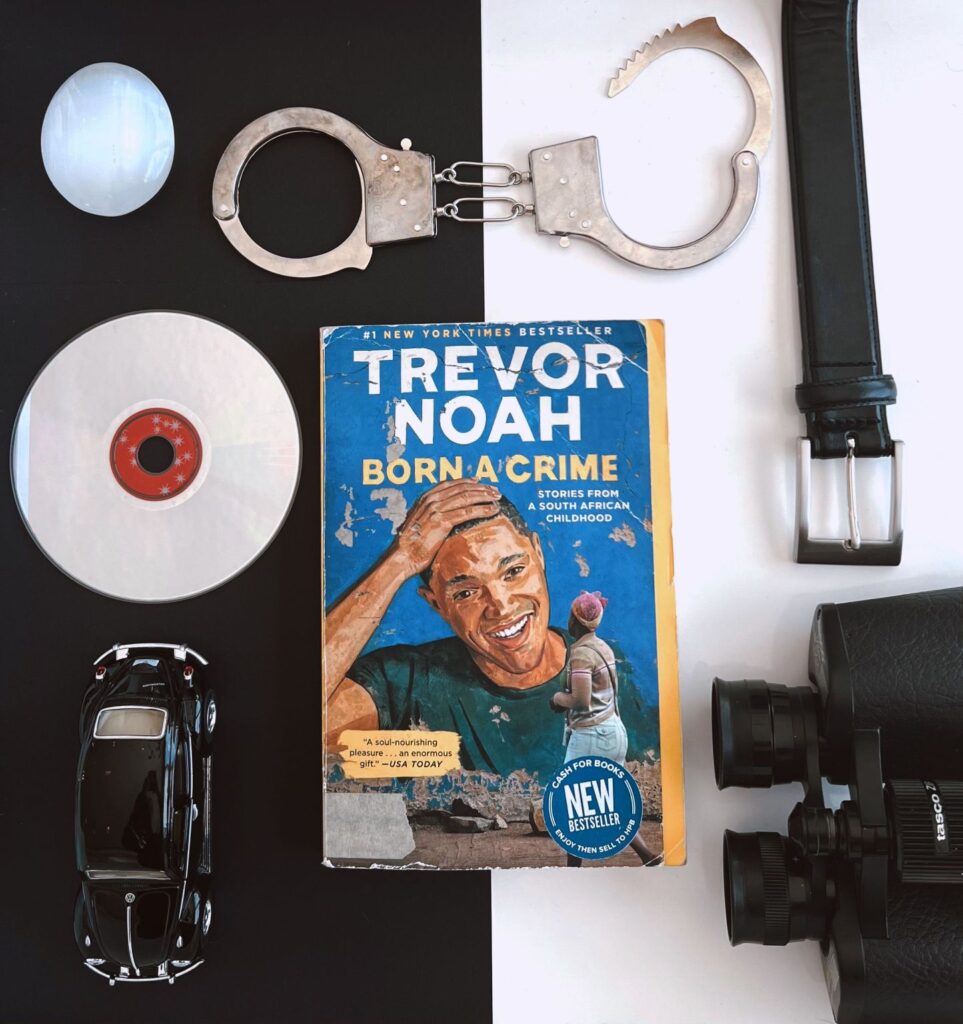This post was written by NCTE member Gina Kortuem, originally posted on the blog lit & more.
I first heard about Book Bentos a few years ago on Instagram. “Cute!” I said, then scrolled on. However, the image stayed with me. A few months later I sought it out with Google and saw a few images of Book Bentos.
A Book Bento is a flat lay photo of a book, surrounded by images that correlate with the plot, themes, or setting. Check out their Instagram page here!
For my first Book Bento assignment, I made it optional as one of several creative book reports during Covid. Only a few students did the assignment, but the ones I got were intriguing.
Last year, I assigned Book Bentos to my AP English Literature students and made it an option for extra credit to the rest of my classes. The results were amazing!
This quarter, I used it as a replacement for a timed writing (my choice: I’m swamped with grading). My students liked it so much they requested to do it for future assignments as well. I also beefed up my rubric to emphasize analysis more, so the responses I got were surprisingly analytic and text-based.
Here are a few examples of the Book Bentos I got for this assignment, with portions of their analysis included: Why Bento?
Why Bento?
There are several reasons to implement a book bento assignment into any of your classes this year.
- They require less grading than an essay. I got through a stack of 15 today in 20 minutes, when grading their on-demand essays usually takes over an hour.
- They integrate analysis in a way that goes beyond writing. This is a great assignment to allow creative and visual minds to shine. While writing is still included, it isn’t the sole requirement.
- It helps me get to know my students. I get to see the way their minds work and how they find items for their photo. While some students raided our theater department’s prop closets, most of the students used items from around their homes.
- Book Bentos are more challenging than they seem. The items for the book take a while to think up and find. But even more challenging is the layout and photography elements. Flat lays are difficult, especially when required to avoid shadows and glares. Most of my students tried several layouts and spent a long time editing on their phones before submitting.
- It’s fun! My students asked to see each other’s Book Bentos, so we did a little photo gallery so they could appreciate each other’s works. Many have already asked to do the assignment all over again!
If you’re interested in a simple rubric for scoring Book Bentos, here’s a file I created. It’s editable so you can change it to suit your needs. All I ask is that you don’t charge for these materials!
I hope this inspires you to try Book Bentos sometime this year in your classes.
 My name is Gina Kortuem and I am a teacher, mother, and educational resource creator. While I’m constantly learning and growing, I have experience teaching many subjects in the area of ELA. These include AP English Literature, basic and Honors levels grades 9-10, Shakespearean Literature, World Literature, British Literature, Journalism, and Creative Writing. I also have experience in One Act coaching and enjoy writing plays in my spare time.
My name is Gina Kortuem and I am a teacher, mother, and educational resource creator. While I’m constantly learning and growing, I have experience teaching many subjects in the area of ELA. These include AP English Literature, basic and Honors levels grades 9-10, Shakespearean Literature, World Literature, British Literature, Journalism, and Creative Writing. I also have experience in One Act coaching and enjoy writing plays in my spare time.
I live in St. Paul, MN with my husband and our three children. I love exploring St. Paul, Stillwater, and the Grand Marais area, as well as traveling throughout the US and Europe when I get the chance. My family and I enjoy camping, watching movies, and playing games. Personally, I enjoy reading, hanging out with my college girls and teacher besties, and making (slow) improvements to our home in St. Paul.
It is the policy of NCTE in all publications, including the Literacy & NCTE blog, to provide a forum for the open discussion of ideas concerning the content and the teaching of English and the language arts. Publicity accorded to any particular point of view does not imply endorsement by the Executive Committee, the Board of Directors, the staff, or the membership at large, except in announcements of policy, where such endorsement is clearly specified.

